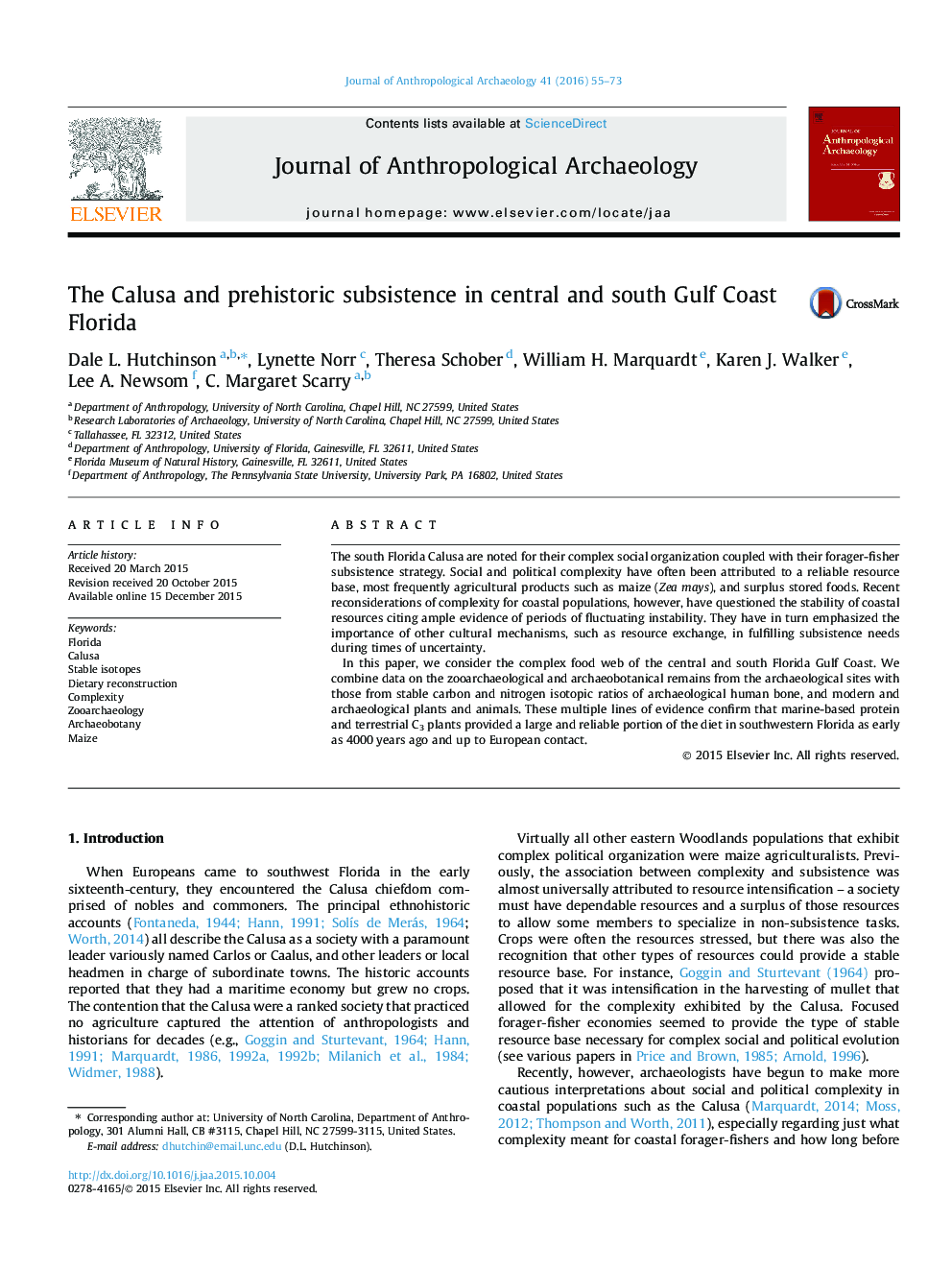| Article ID | Journal | Published Year | Pages | File Type |
|---|---|---|---|---|
| 1034873 | Journal of Anthropological Archaeology | 2016 | 19 Pages |
•We reconstruct prehistoric human diet for 3 regions of the Florida Gulf Coast.•We report on prior archaeological finds of plants and animals.•We use the isotopic signatures of multiple plants and animals to establish a baseline.•We find that the majority of the human diet consists of maritime resources.•The collagen and apatite carbon data indicate no maize in the prehistoric human diet.
The south Florida Calusa are noted for their complex social organization coupled with their forager-fisher subsistence strategy. Social and political complexity have often been attributed to a reliable resource base, most frequently agricultural products such as maize (Zea mays), and surplus stored foods. Recent reconsiderations of complexity for coastal populations, however, have questioned the stability of coastal resources citing ample evidence of periods of fluctuating instability. They have in turn emphasized the importance of other cultural mechanisms, such as resource exchange, in fulfilling subsistence needs during times of uncertainty.In this paper, we consider the complex food web of the central and south Florida Gulf Coast. We combine data on the zooarchaeological and archaeobotanical remains from the archaeological sites with those from stable carbon and nitrogen isotopic ratios of archaeological human bone, and modern and archaeological plants and animals. These multiple lines of evidence confirm that marine-based protein and terrestrial C3 plants provided a large and reliable portion of the diet in southwestern Florida as early as 4000 years ago and up to European contact.
